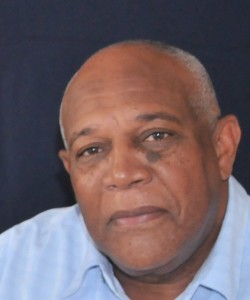
Just when we thought that gun violence was waning in our community, another young man was shot down in broad daylight on the street in North Hill. At approximately 10.30 a.m. on Wednesday October 1, 2014 that scourge of violence among youth struck again. It was the second young man callously murdered this year. Both victims were in their very early twenties. The Mighty Springer asked some very poignant questions in the first verse of his 2013 Calypso entitled: “Shot down to die!” The lyrical questions were as follows:
“How long will this violence go on in our land?
When will our communities take a strong stand?
Mothers are crying o’er sons in a coffin
Others by bedsides just praying and hoping
Will this cycle of violence ever cease?
When will we be able to live in real peace?
What could be the reason to take a young life?
Why settle disputes with a gun or a knife?
What can be the issues that have them so vex?
That mothers are wond’ring if theirs will be next?”
King Springer then winds up his chorus with the somber lament: “Shot down to die! Shot down to die! Another young man shot down to die!”
Every time there has been an act of violence among youth there are cries of outrage. These cries may be followed by protest marches; panel discussions; prayer vigils; facebook and email exchanges; or impassioned speeches. Six weeks later all is forgotten. Perhaps even forgiven until the next time. The response to youth and gun violence in our communities is “on again off again”. There is so much blame going around in the aftermath of such acts of violence that everyone can find their comfort zone. Some blame the police; some blame the politicians; some blame the parents; some blame the teachers; some blame the television; some blame drugs; some blame the system; some blame the “foreigners”; and on and on. Then it starts all over again.
But my decision to wake up this sad story is the fact that the response to the last two murders seems unlike any of the responses we have had over the years. The level of outrage to these two murders is so low that it seems to be non-existent — or that the entire matter has been brushed aside. There is now an atmosphere of indifference, or even acceptance, in the community for these heinous crimes. And I consider this to be a very sad reflection on the state of caring and compassion in Anguilla. Have we reached a place where violence has become the norm in our society? Or have we lost our resolve to do something to change the direction our young people are headed? The answers to these questions will decide whether our island remains the peaceful and tranquil place we want it to be.
I was shocked to hear comments like: “He had it coming!”; “Let them kill one another!” – and many others so insensitive that to even mention them would reflect sadly on the state of our society. One would get the impression that these youngsters fell from outer space and landed on Anguilla and were neither raised; nurtured nor trained among us. We seem to have forgotten that they sat in the same classrooms with our children; played in the same schoolyards; were exposed to the same influences; and that they too have family that care about them – and are in grief and mourning because of the senseless acts that brought such an early ending to their lives. They are our children. We should show concern for their loss.
On the other side of the equation are the youngsters who perpetrated these vicious acts. What possessed them to use such violent means as a solution to whatever disputes they were seeking to repair? Where and how did they get the weapons they employed? Where were they socialized into such criminal behaviour? How many other youngsters think like them? Can our system rehabilitate them? It is a fact that the majority of these young men were born and raised here in Anguilla — so they are our own. They are our responsibility. We should be a part of the solution.
The point I am making is that the hearts of our people have become hardened against both the victims and the perpetrators of violence. It seems that many of us have equally callous feelings towards both and perhaps subconsciously hope that this approach would make it go away or absolve us of our guilt. What this approach does, however, is make us an uncaring people and perpetuates the manner in which our youngsters will settle their differences. Thus making us a part of the problem.
The apathy and indifference that I have witnessed in response to these acts of violence over the past few months are very scary. It is for this reason that I thought that however crass it comes across, people should not be allowed to forget that “a mother’s tender care will never cease towards the child she bares”. Whether it is the victim or the murderer. And neither can we remove ourselves from the pain and guilt of violent crimes in our communities.







